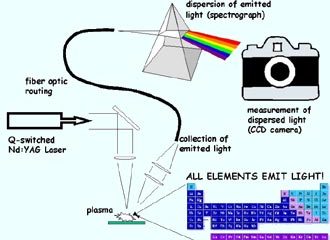This special field revolves around processes for modifying material properties (milling, cooling), composition (filtration, distillation) and type (oxidation, hydration).
Valuable information is available on a broad range of technologies including material separation, laser processes, measuring techniques and robot engineering in addition to testing methods and coating and materials analysis processes.

A remote control sensing device is being developed to detect defects in sewer walls.
Using both ultrasound and laser light, digital information on the condition of the sewer walls is fed back to a computer which can be programmed to spot problems.
The research is being carried out by a team in the Department of Mechanical Engineering at King’s College London, led by Dr Kaspar Althoefer and Professor Lakmal Seneviratne. Funding is from the Swindon based Engineering and Physical Sci

“Recalling products because of design flaws in the packaging can be prevented.” Packaging experts badly needed in industry
Delft researcher Roland ten Klooster will defend his thesis on Monday the 30th of September at TU Delft. He has developed systematic plan for the development of packaging for products. Ten Klooster: “There are number of aspects play a part in the development of packaging, my model helps the packaging designer to see, and use these aspects.” In his thesis, Ten Kloo

A high-fidelity spectrometric system for studying the behavior of drops and particles in industrial flame reactors has been constructed by researchers at the University of Illinois at Urbana-Champaign in collaboration with researchers at the University of Arizona. The instrument was used to study the potential of thermal combustors for reducing the volume of liquid nuclear wastes for safe, long-term storage.
Vitrification of radioactive waste into glassy solids is the most popular approach f

Instant detection for chemicals, explosives, and biohazards
A little over a year after September 11, a laser technique is lighting a new path to homeland security. In recent Army laboratory research, this technique instantly detected and identified various explosives.
Preliminary results indicate that it can also tell the difference between several close relatives of anthrax.
Recent breakthroughs now let it detect any known substance, at least in theory. The laser t

Art conservators have been slow to adopt lasers as restoration tools, preferring their trusty scalpels and solvents to untried technologies. But the first systematic study of the long-term effects of lasers on paintings should help ease their doubts: the results show that lasers can be superior restoration tools without sacrificing the safety of priceless works of art.
The findings are reported in the Sept. 15 print edition of Analytical Chemistry, a peer-reviewed journal of the American Ch

In a Technology Foundation STW project, Coen van Gulijk has developed a new concept for a robust soot filter for diesel engines. As well as filter stages, the filter has an open canal so as to exclude the danger of blockage and thus fire.
The new soot filter consists of series of perforated ceramic foams. The surface of the ceramic is impregnated with a catalyst on which the incoming soot particles are burnt and released as gases. Ash particles from impurities in the diesel, which enter the filte